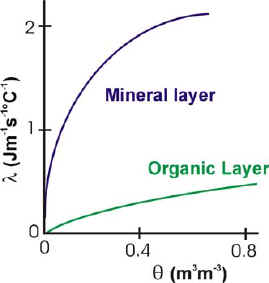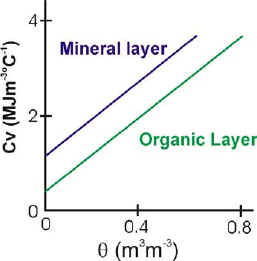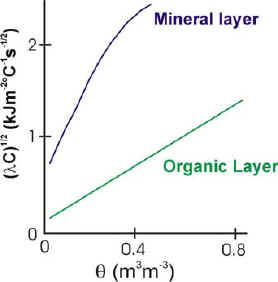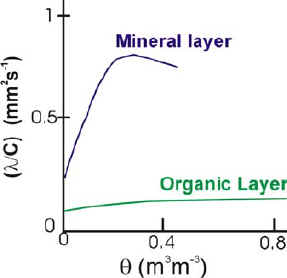LFS:SoilWeb/Interactions Among Soil Components/Soil Water & Soil Air Interactions
Pore Space
The organization of the solid components in soil determines the geometric characteristics of pore space. These configurations determine how water and air are transmitted and retained.
Types of Soil Pores

- Macropores (diameter > 0.08 mm) occur between aggregates (interped pores) or individual grains in coarse textured soil (packing pores) and may be formed by soil organisms (biopores). They allow ready movement of air and the drainage of water and provide space for roots and organisms to inhabit the soil.
- Micropores (diameter < 0.08 mm) occur within aggregates. They are usually filled with water and are too small to allow much movement of air. Water movement in micropores is extremely slow and much of the water held by them is unavailable to plants.
Pore size distribution is related to soil structure. See Soil Structure for more information.
Relationship between Water & Air in Pores
Pore space can be filled with either water or air. The volume of soil water and soil air, however, cannot exceed pore volume (Vf). As soil water increases, soil air must decrease and vice versa.
Aerobic and Anaerobic Conditions
Respiration is a metabolic process in which an organism obtains energy by oxidizing carbohydrates (e.g., sugars). An oxidizing agent is required.
- Under aerobic conditions, oxygen is available as an oxidizing agent for respiration by organisms. Dry soils have adequate oxygen supply for aerobic respiration.
- Under anaerobic conditions, oxygen is not available as an oxidizing agent for respiration by organisms. Instead, other agents, such as Fe3+, Mn4+, NO3- or SO42-, are used by soil organisms carrying out this process. Wet soils are oxygen limited and anaerobic (sometimes called anoxic) respiration will take place.
Aerobic and Anaerobic Organisms
Microorganisms differ in their aeration requirements.
- Aerobic organisms require the presence of oxygen. Examples: Some fungi, some bacteria, actinomycetes.
- Obligatory anaerobic organisms function only in the absence of oxygen. Examples: Bacteria that use sulfate as an electron acceptor.
- Facultative anaerobic organisms can function with or without molecular oxygen. Examples: Bacteria that use nitrate as an electron acceptor.
See Soil Organisms for more information.
Effect of Water on Thermal Properties
Different water contents will have a strong influence on soil thermal properties.



